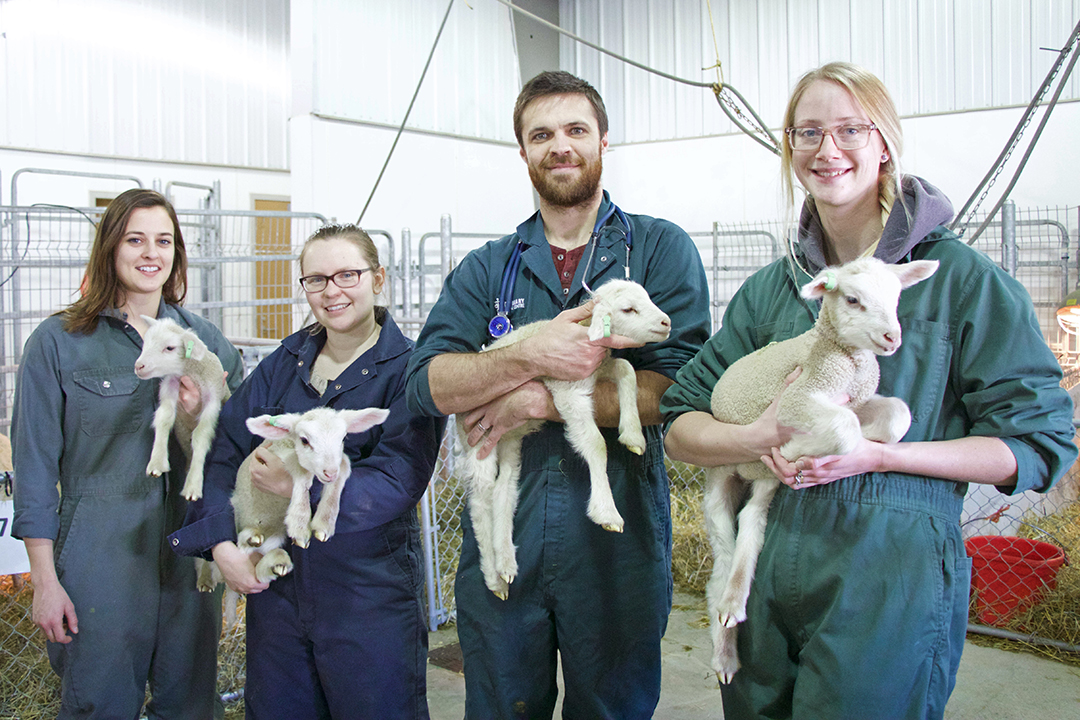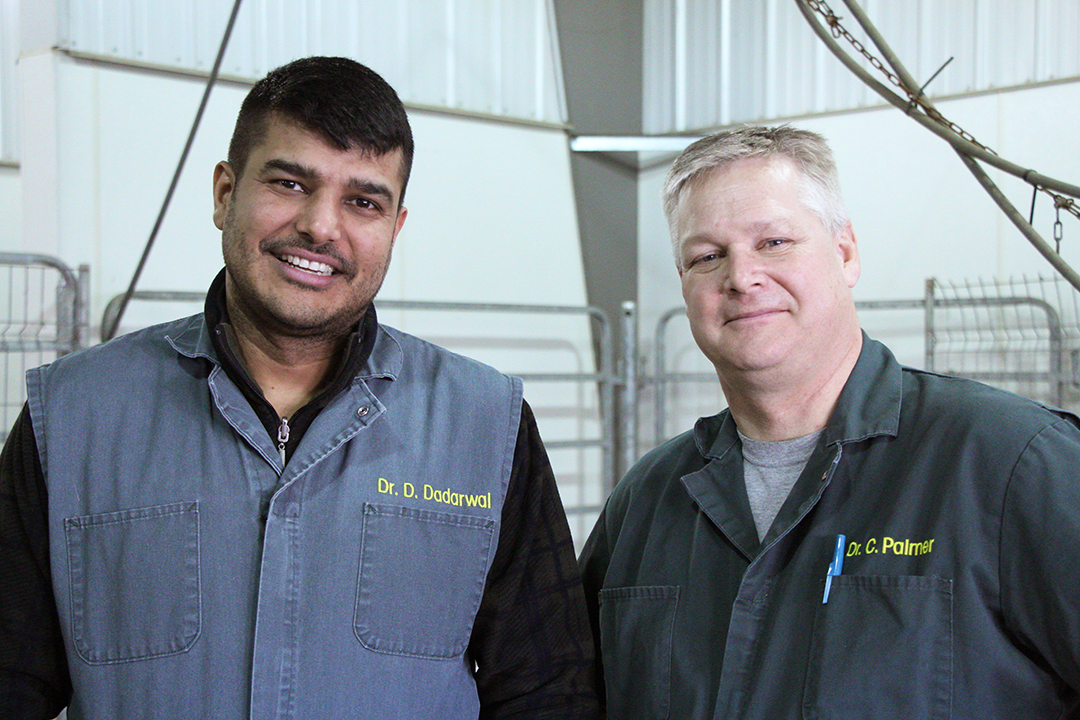
Lambs and calves help prepare students for practice
Fourth-year veterinary students at the Western College of Veterinary Medicine (WCVM) have many different options when choosing their clinical rotations, and with each rotation, they gain valuable hands-on experience. But WCVM reproduction specialists Drs. Colin Palmer and Dinesh Dadarwal thought something was missing from the list: a neonatal rotation focusing on ruminants.
By Taryn RiemerWhile senior students have a good chance of gaining first-hand experience with calving and lambing in other clinical and external rotations, this new rotation provides more specific knowledge on ruminant reproduction.
“Years ago, we used to have reproductive rotations, which were great for the students, but there was a lot of classroom work because there were no animals on site that were purposely bred to give birth here,” says Palmer, an associate professor in the WCVM’s Department of Large Animal Clinical Sciences. “So this is a brand new rotation in that sense.”
Palmer and Dadarwal’s goal for this rotation was to give students first-hand experience with lambing and calving. During the rotation, students monitored mothers and newborns and gained an understanding and appreciation for behavioural and physiological changes that occur in the mothers before and after they give birth. They also gained experience with technical procedures that occur during and after calving and lambing.
Palmer and Dadarwal began preparations for the students’ new learning experience nearly a year ago. For its first year, the rotation included eight Canadian Rideau Arcott-cross ewes and three Holstein heifers that were bred to give birth during the first two weeks in February. The ewes gave birth to a total of 13 lambs and the heifers each had one heifer calf.
Fourth-year student Josée Grégoire, from Winnipeg, Man., was one of four students in this year’s ruminant neonatal rotation.
“At the start when we were waiting for the first lamb or calf to come, there was a lot of anticipation building. Once the lambing started, there were new ones every day, and on two different occasions, we had to intervene to pull a lamb and a calf,” says Grégoire. “On the last day of the rotation we were able to watch a lambing in the morning and a calving in the afternoon. It was definitely a very exciting rotation.”
Since this was the rotation’s first offering, the instructors wanted to get a lot of input from the students.
“They were really honest with us and we had a great conversation on the last day of the rotation to talk about how they thought things went,” says Palmer. “The students said they appreciated the opportunity to gain practical hands-on skills and develop confidence in their abilities.”
And Grégoire really appreciated this aspect of the rotation: “It definitely allowed the group of us to make the most of it. We were able to guide our own learning and had a lot of input in the rotation.”
Grégoire also enjoyed the practicality of the rotation: “Having a good understanding of maternal and neonatal care in the lambing and calving process is very helpful for our future careers in this field.
“For example, on the first day of the rotation, we had to make a list of all the equipment we would possibly need for lambing and then put all of it together. This gave us an understanding of all the things that farmers need to have on hand.”
Now that the rotation has wrapped up, Palmer said the heifers and calves will be sold as pairs. The ewes will stay onsite for next year’s rotation and some of the lambs will be sold once they are weaned, while others will stay on site and become replacement ewes.
Next year, Palmer and Dadarwal will offer this rotation again — but times two.
“There will be up to 12 students that can take the rotation, six per each two-week block, and we're going to require that they've taken two food animal-related electives in their third year,” says Palmer, adding that the recommendation came from this year’s participants. “We want to see students who have previously shown a real interest in food animals taking this rotation.”
While the plan is to continue working with pregnant sheep and cows for 2019, Palmer eventually hopes to expand the neonatal rotation so it includes other species.
Along with Palmer and Dadarwal, several others worked to make the ruminant neonatal rotation a success. Dr. Fabienne Uehlinger, Dr. Chris Clark and the team at the Animal Care Unit all had a hand in the rotation.
“Overall, this was a really exciting rotation and there was even a calving at noon one day, which was great because a lot of students and some teachers came to watch,” says Palmer. “I love seeing people’s interest in this, and I’m looking forward to the future rotations.”

